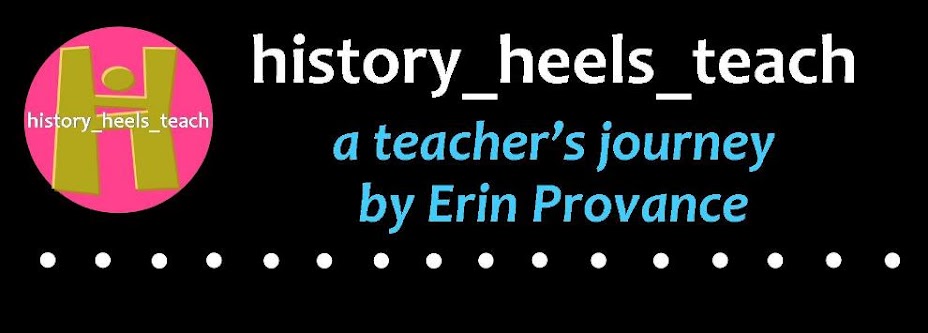The basics:
I teach five class periods, 42 minutes in length, with average class sizes between 25-28. My largest was 34.
The setup:
Ninety percent of every single class is this setup. This would obviously exclude testing days, research/library days, etc.
- Think Now Warm-up (10 minutes)
- Lesson (30 minutes)
- Closing Out (2-3 minutes)
Think Now:
Every day, as the students walk in, they have three minutes to get their binders. (Students must have a 3-ring binder. I teach in a Title I school, so that means I buy some myself). My mainstream kids are allowed to house their binders in my room and respond to the Think Now that is either projected or written on the board.
They respond on a sheet of paper that I prepare. It looks like this:
Sometimes the Think Now is a pop quiz--write your name on the top and number 1-5 (they know at this point they are being assessed).
Sometimes it is just a review from yesterday--in 3 lines, tell me what you learned about the Bill of Rights. Close your eyes, what does war look like? Sound like? What do you hear? Sometimes it is a survey type question: What would you like your teacher to know?
At the end of three minutes, the Think Nows are collected and put on my desk. They are added to the class points (see previous blog post). OK, this is NOT the end of the Warm-up. EVERY SINGLE DAY, I then say, 'get out your binders, open to the first blank lined sheet and head it: Date and Subject (EX: January 10th, World War II).' And we DISCUSS the Think Now. EVERY DAY!
As the year progresses, because we do this every day, students will start to facilitate this part. WOW--will they surprise you!
Lesson:
Next we segue into the lesson. This is where you need to get creative. Change this up each day.
Here are some ideas I use to keep the class engaged in the learning:
1. Read a passage together as a class then use Play-Doh to recreate a scene in group.
3. Read a passage and create a newscast about the event in groups.
4. Use significant image charts (freebie rubric in my store).
5. Take a pretest, trade and grade and then play Let's Make a Deal.
6. Read silently and answer guided questions.
8. Hold gallery walks in the hall/classroom in groups.
10. Hold a research scavenger hunt using iPads.
11. Create graphic organizers.
13. Play BINGO.
14. Recreate a scene from a passage as a play or song.
Closing Out:
Students will close out class by stating the objectives. Please see my previous post on writing objectives on how I handle this in the room.
Sometimes I have an exit question and if all the students in the class were excellent that day (no tardies, etc), they get to roll the big dice and add those points to their class total.
Happy teaching friends!





















